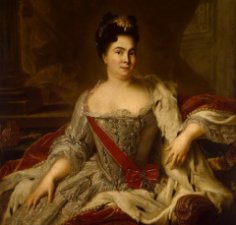
On April 15, 1684, 325 years ago, in the Baltics, another daughter was born into the family of a peasant of either Polish or Lithuanian origin, Skavronsky, who was destined by fate to rise from the rags not just to princes, but much higher – to sit in the most coveted chair in the Russian Empire: the throne.
“And do with it what you want…”
From a young age, Marta was very lively, did not disdain any work and had a very cheerful disposition. People like her say: nothing can stop her. History is silent about her education (if she had any) and who her teachers were, but a special “school” was always felt in her: she learned very early that men, no matter how influential they seemed, can be easily twisted into ropes. There is only one way to achieve this: seduce and tie them up. Drown them in the ocean of your passion, and then “do whatever you want with them…”
Historians suspect that Marta's first teacher was the Swedish dragoon Rabe, who arrived in Marienburg (now Aluksne) at the beginning of the 18th century, looking for apartments for his squadron, and first went to the house of the local pastor named Gluck, where he discovered that the holy father had a very nice laundress and cook. While the pastor was not at home, the brave dragoon began to hit on the cutie, which he succeeded brilliantly. And then he discovered with horror that this small affair threatened to develop into something more. He struggled with himself, tried to forget the amorous girl and even left for some time (service matters), but soon returned, took Marta and made her his official wife.
But the times were very turbulent. The dragoon had not yet had time to properly enjoy the delights of married life, which took place in field conditions, when he was killed. But he had already managed to “instill a demon” and awaken Marta's sensuality. The attractive young woman, who never refused anyone, “attached herself” to another interesting “little man”, then to a third, a fourth. Was she sincerely attached to at least one of them? This cannot be ruled out. And her frivolity can be explained by the fact that she understood perfectly well that tomorrow or the day after tomorrow her betrothed could easily be killed. And if so, why not make the last days of the hero's earthly existence more pleasant? Both for him and for herself.
The beautiful “German” knew who to bet on…
When Marienburg was taken by Russian troops, Marta, by and large, hardly noticed it. She only began to learn Russian in order to somehow defend her interests. And for love, as we know, there is no language barrier at all.
The first to notice her and make her his mistress was Count Boris Sheremetev, then the explosive Menshikov stole her away. What was her number one associate of Peter's? She never tormented herself with this question. And he liked the ardent German girl so much that for some time he stopped thinking about anything else except how to quickly find himself with her in a secluded place. Neither his subordinates nor Peter I's “spies” could fail to notice this absent-mindedness of the tsar's favorite. But when Peter Alekseevich was first informed about “Aleksashka's” love madness, he only shrugged his shoulders: she'll get over it! She's not the first, she won't be the last.
Days, weeks, months passed. And Alexashka was still confused, his gaze wandered all the time in search of the temptress Martha, and at every feast with Peter he sat as if on pins and needles, all the time trying to run away somewhere. This could not help but intrigue the Tsar, and one day he ordered Menshikov to bring this sorceress…
It would have been better not to say, because Marta immediately determined who was in charge here and launched a large-scale attack in order to capture Peter. But this attack was very competently constructed. After all, interest in one's own person could have been aroused not only by a frontal attack, but also by using the “blind goldfinch” Menshikov…
Wife to the king and mother to the soldiers
Be that as it may, after some time Peter stopped “disdaining” the low origins of “Aleksashka’s bride” and one day, while drunk, responded to her caresses. From then on it went! Menshikov was officially “excommunicated” from Marta. In any case, they never tried to show their passion in public, but, apparently, at the first opportunity they pounced on each other, like a wave on the seashore or fire on dry reeds.
But one could not help but note Martha's very important quality of a “life partner” – her very attentive attitude towards her lover. Peter, as is known, suffered from epileptic seizures. It was Martha who knew how to recognize the signs of impending trouble and did everything possible to make the seizure less intense. She, like no one else, could discern the slightest shades of the hot-tempered Peter's mood and often “extinguished” the impending explosion. Needless to say, the tsar did not part with his passion, especially on campaigns.
They met in 1703, and a year later she gave birth to Peter's first child, named Peter, the following year to a second son, Paul (they died before reaching the age of one), in 1708 to a daughter, Anna, and in 1709 to Elizabeth (the future empress). Elizabeth's date of birth is easy to remember – she was born a few months after the Battle of Poltava. And when the armies of Peter I and Charles XII met in battle near Poltava, the Russian Tsar probably knew that his sweet Martha was pregnant again…
There is a way out of any situation
Her finest hour came during the Prut campaign. Then the Russian troops found themselves surrounded by a large group of Turks. In Moldavia in July 1711, 190 thousand Turks and Crimean Tatars pressed the 38 thousand Russian army to the river, completely encircling them with numerous cavalry. Martha set off on a long campaign, being seven months pregnant. But when a serious threat hung over the Russian Tsar, and Peter had two options: surrender or die, his unwed wife came up with a knight's move. Martha suggested tempting the vizier with expensive gifts. She was the first to take off all her jewelry and suggested that the officers do the same. In the Cossack manner, they passed the hat around…
The vizier liked the gifts and willingly made peace. In 1713, in honor of the “bloodless” victory of Martha-Catherine (she was baptized under this name), Peter I established the Order of St. Catherine, and the first recipient was the tsar's combat friend.
He was very flighty, changing his favorites like gloves. And his wife (he officially married her in 1712) tried not to torment herself with the question of who was visiting her husband at night and why. In the end, she found an antidote – she acted in exactly the same way, and neither Peter nor Menshikov could boast that Catherine was faithful to them alone. Thus, she was sincerely attached to the chamberlain Mons.
Ekaterina's favorite tactic is: don't interfere with your spouse's life
By that time, Peter, who had been frequently ill lately, had drawn up an official will in which, in the event of his death, he transferred all power in the empire to his official spouse, Empress Catherine I. But upon learning of the betrayal, the emperor, firstly, ordered Mons to be executed, and, secondly, immediately tore up his will. And, thirdly, he put his spouse in a carriage and ordered it to be driven past the place where the pole with Mons' severed head impaled on it stood.
We must give credit to the empress’s composure – when she saw this terrible picture, not a single muscle in her face moved…
After Peter I's death, Catherine did not reign long on the Russian throne. By that time, her boudoir had become a “walk-through yard” and, as Soviet historians would say, the woman had completely “lost her inhibitions.” But it was her choice. After all, she was only 40 years old in 1724. It's a shame that the empress never lived to the age of “berry,” 45. But it's unlikely that her frequent change of partners was to blame. Her biological clock simply stopped. And it happened on May 17, 1727…
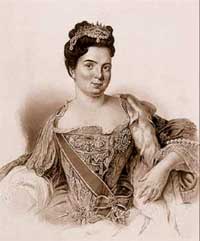
Martha struck Peter's heart so young and fresh
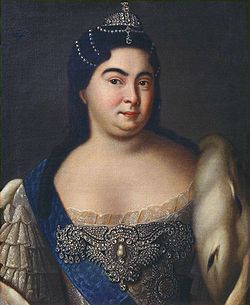
And here she is already an empress. The years have taken their toll…
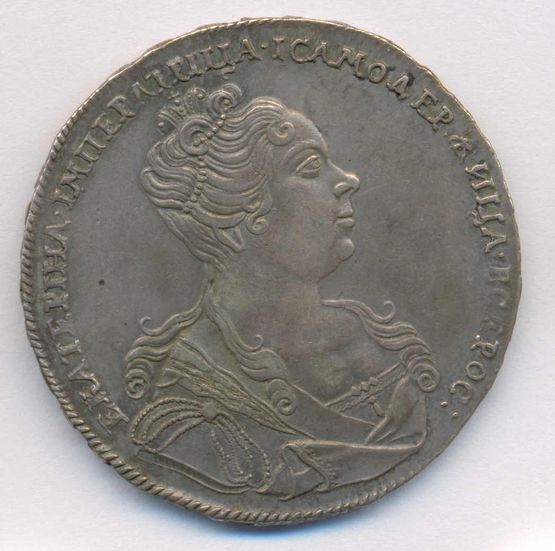
In order for the people to constantly “hold” the empress in their hands, in 1727 a ruble with her profile was minted…
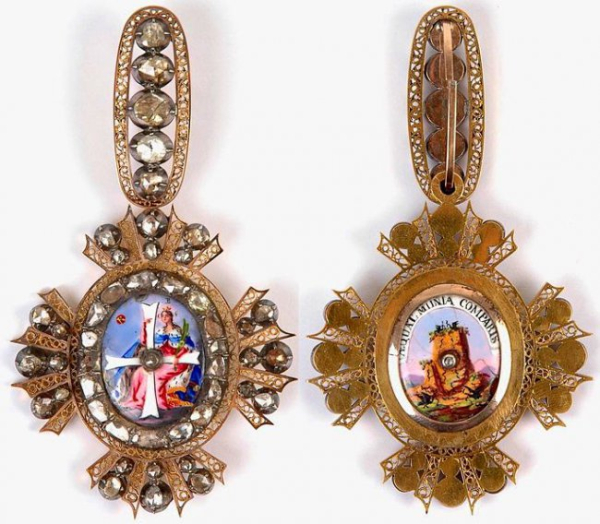
Badge of the Order of St. Catherine II degree. Front and back sides





